Market news & insights
Stay ahead of the markets with expert insights, news, and technical analysis to guide your trading decisions.

Most traders understand EA portfolio balance through the lens of traditional risk management — controlling position sizes, diversifying currency pairs, or limiting exposure per trade.
But in automated trading, balance is about deliberately constructing a portfolio where different strategies complement each other, measuring their collective performance, and actively managing the mix based on those measurements.
The goal is to create a “book” of EAs that can help diversify performance over time, even when individual strategies hit rough patches.
A diversified mix of EAs across timeframes and assets can, in some cases, reduce reliance on any single strategy. This approach reduces dependency on any single EA’s performance, smooths your overall equity curve, and builds resilience across changing market conditions.
It’s about running the right mix, identifying gaps in your coverage, and viewing your automated trading operation as an integrated whole rather than a collection of independent systems.
Basic Evaluation Metrics – Your Start Point
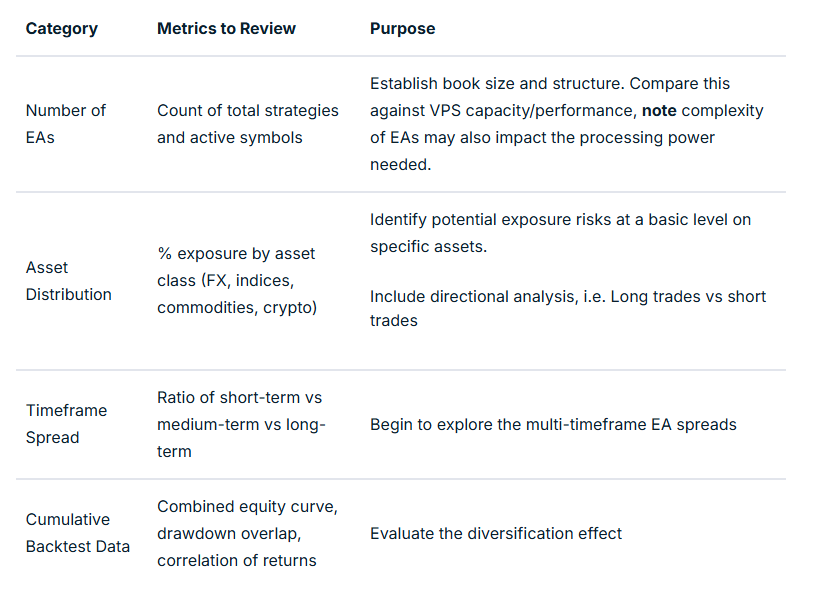
Temporal (timeframe) Balancing
When combined, a timeframe balance (even on the same model and instrument) can help flatten equity swings.
For example, a losing phase in a fast-acting M15 EA can often coincide with a profitable run in an H4 trend model.
Combining this with some market regime and sessional analysis can be beneficial.
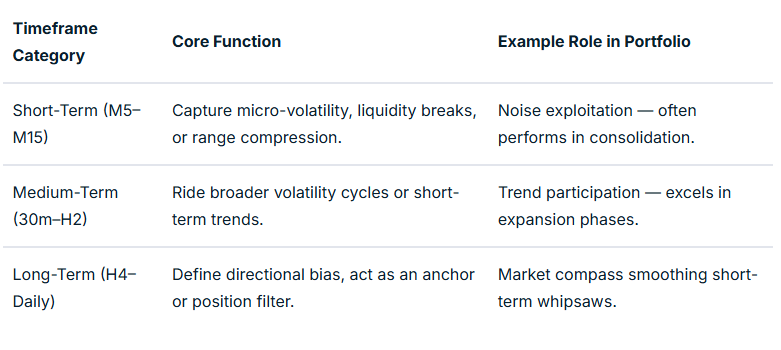
Asset Balance: Managing Systemic Correlation Risk
Running five different EAs on USDJPY might feel diversified if each uses different entry logic, even though they share the same systemic market driver.
But in an EA context, correlation measurement is not necessarily between prices, but between EA returns (equity changes) relating to specific strategies in specific market conditions.
Two EAs on the same symbol might use completely different logic and thus have near-zero correlation.
Conversely, two EAs on a different symbol may feel as though they should offer some balance, but if highly correlated in specific market conditions may not achieve your balancing aim.
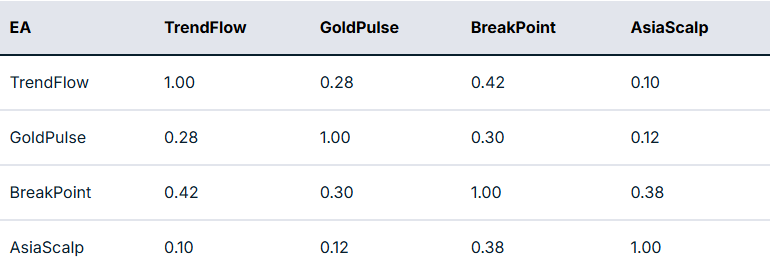
In practical terms, the next step is to take this measurement and map it to potential actionable interventions.
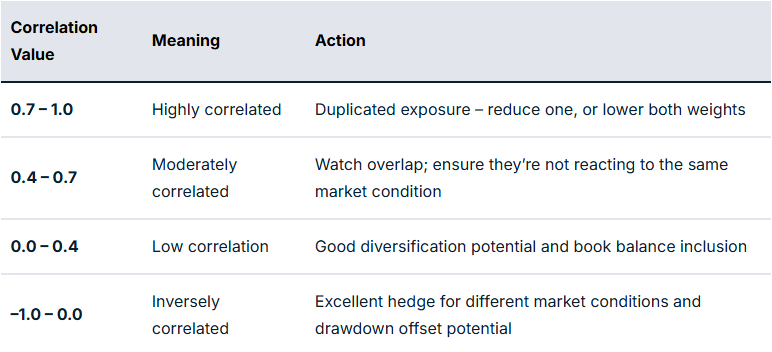
For example, if you have a EURUSD Trend EA and a GBPUSD Breakout EA with a correlation of 0.85, they are behaving like twins in performance related to specific market circumstances. And so you may want to limit exposure to some degree if you are finding that there are many relationships like this.
However, if your gold mean reversion EA correlates 0.25 compared to the rest of your book, this may offer some balance through reducing portfolio drawdown overlap.
Directional and Sentiment Balance
Markets are commonly described as risk-on or risk-off. This bias at any particular time is very likely to impact EA performance, dependent on how well balanced you are to deal with each scenario.
You may have heard the old market cliché of “up the staircase and down the elevator shaft” to describe how prices may move in alternative directions. It does appear that optimisation for each direction, rather than EAs that trade long and short, may offer better outcomes as two separate EAs rather than one catch-all.
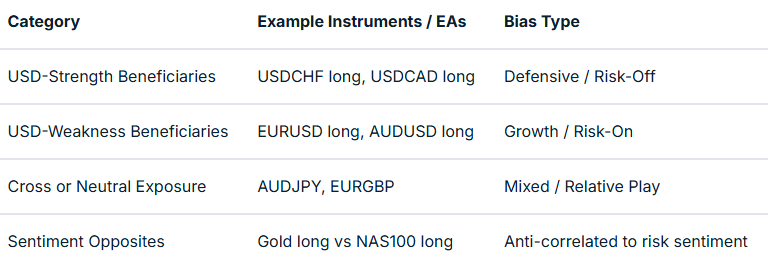
Market Regime and Volatility Balance
Trend and volatility states can have a profound impact on price action, whether as part of a discretionary or EA trading system. Much of this has a direct relationship to time of day, including the nature of individual sessions.
We have a market regime filter that incorporates trend and volatility factors in many EAs to account for this. This can be mapped and tested on a backtest and in a live environment to give evidence of strategy suitability for specific market conditions.
For example, mean reversion strategies may work well in the Asian session but less so in strongly trending markets and the higher volatility of the early part of the US session.
As part of balancing, you are asking questions as to whether you actually have EA strategies suited to different market regimes in place, or are you using these together to optimise book performance?
The table below summarises such an approach of regime vs market mapping:
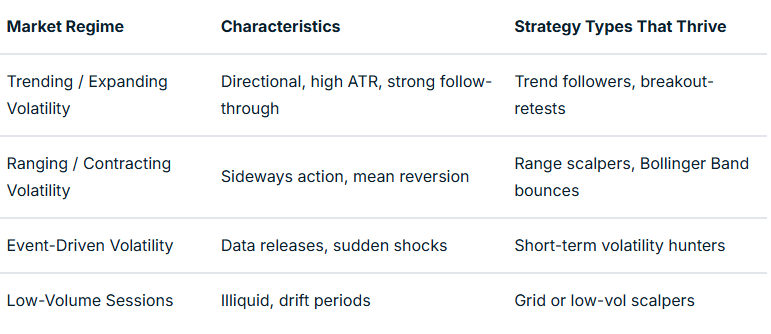
Multi-Level Analysis: From Composition to Interaction
Once your book is structured, the challenge is to turn it into something workable. An additional layer of refinement that turns theory and measurement into something meaningful in action is where any difference will be made.
This “closing the circle” is based on evidence and a true understanding of how your EAs are behaving together. It is the step that takes you to the point where automation can begin to move to the next level.
Mapping relationships with robust and detailed performance evaluation will take time to provide evidence that these are actually making a difference in meeting balancing aims.
To really excel, you should have systems in place that allow ongoing evaluation of the approaches you are using and advise of refinements that may improve things over time.
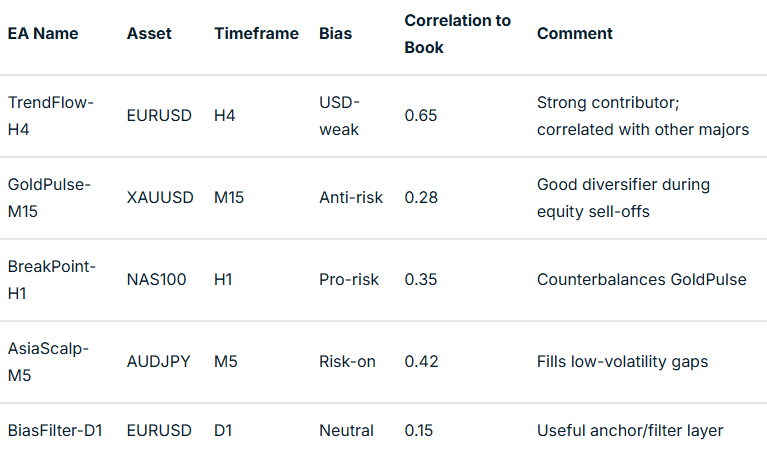
What Next? – Implementing Balance in Practice
Theory must ultimately translate into an executable EA book. A plan of action with landmarks to show progress and maintain motivation is crucial in this approach.
Defining classification tags, setting risk weights, and building monitoring dashboards are all worth consideration.
Advanced EA traders could also consider a supervisory ‘Sentinel’ EA, or ‘mothership’ approach, to enable or disable EAs dynamically based on underlying market metrics and external information integrated into EA coding decision-making.
Final Thoughts
A balanced EA portfolio is not generated by accident; it is well-thought-out, evidence-based and a continuously developing architecture. It is designed to offer improved risk management across your EA portfolio and improved trading outcomes.
Your process begins with mapping your existing strategies by number, asset, and timeframe, then expands into analysing correlations, directional bias, and volatility regimes.
When you reach the stage where one EA’s drawdown is another’s opportunity, you are no longer simply trading models but managing a system of EA systems. To finish, ask yourself the question, “Could this approach contribute to improved outcomes over time?”. If your answer is “yes,” then your mission is clear.
If you are interested in learning more about adding EAs to your trading toolbox, join the new GO EA Programme (coming soon) by contacting [email protected].


Despite all of the enthusiasm, energy, and airplay entries receive, it is your exit that determines if your trade is considered successful or not.Yet most traders, even those with experience, continue to obsess over how to get into a trade, often treating the exit as an afterthought in comparison. They can recite their setup criteria at the drop of a hat, providing great step-by-step (and often complex) details. But when asked, “How do you decide when to get out?” that clarity and thoroughness are noticeably absent or vague. No matter what type of trader you are, it is your exit strategy that shapes your risk-reward, determines your win rate, and ultimately defines your trading edge.
Why Most Traders Struggle With Exits
Exiting trades effectively is more difficult than entering.Not only are you trying to read what is currently happening, but there is a level of prediction needed to decide what may happen next.Let’s start with the three most common exit challenges that traders face:
1. Emotional Exits
Many traders close positions prematurely. Not because their setup failed or their exit plan is unclear, but simply because they feel increasingly uncomfortable. This usually stems from fear of giving back existing profit or getting sucked in emotionally to every price move and market noise.This inconsistency in action makes it difficult to determine if your trading strategy is effective. You constantly adjust actions that deviate from your planned strategy, rather than having evidence of performance and how to refine it.
2. Fixed Exits That Don’t Fit the Market
Some traders apply the same x pips/points risk-reward target for every trade, regardless of volatility, current market structure, instrument pricing, direction, or timeframe. While mechanical consistency has its place, ignoring market context can lead to premature exits in trending conditions, overstretched targets in low-volatility environments, and stops too tight to withstand normal price noise.Your exit approaches need to be dynamic to reflect market behaviour. A 20-pip exit might be fine for a 30-minute chart, but it is completely inappropriate for a 4-hourly trade. Consider using variables that adjust with the underlying asset, timeframe, and volatility. E.g., an ATR multiple rather than set points or pips.
3. Poor Exit Plan on Entry
The number one cardinal sin is to have an absent or poorly defined exit plan. When your exits are not effectively pre-planned, decisions are always reactive. As you watch the screen, waiting to "see what happens," you are more likely to:
- Hesitate when you should not
- Regret when you see what you should have done and did not
- Miss regular opportunities for profit
- Sustain larger losses than you should have
You can have the most amazing entry approaches in the world, but if you haven’t made the strategic decision on when and how to exit, your trading outcomes will fall short of expectations.
Reframing Your Exit
To improve your exits, you need to treat them as a strategic component of your system, not a secondary detail. A good exit plan is always:
- Intentional – You know why you’re exiting, consistent with your overall trading objective and financial situation
- Structured – You know how you’re going to exit before you place the trade.
- Adaptive – Your criteria and approaches can adjust to the type of trade or market conditions.
- Consistent – You execute your exit criteria with discipline and consistency, not emotionally driven impulse.
Types of Exit Strategies
Profit Target and Stop-Loss Structure
Even if you are using price action (or another exit approach) for stop loss placement, you should still consider a “safety net” stop to manage a possible catastrophic candle or gap.Ideally, these should be based on something that responds to instrument and timeframe idiosyncrasies.
Signal-Based Exits
This falls into the profit risk category. With signal-based exits, we are looking for a situation where a technical reversal happened before a trail stop being triggered.An example of this could be that you see a technical double top forming as a reversal signal on a long trade (or double bottom on a short trade).
Partial Closes
Although this is not a full exit approach, it is good for the management of profit risk. There are two scenarios where this may be considered:
- The price has moved a predetermined level towards your ultimate profit.
- As an alternative to full exit — it can limit risk while retaining some interest in the trade and locking in profit before a predictable market-moving event.
Moving Forward with Exits
Exit strategy is a process of evaluating where you are now and then putting in the work to fill in any gaps.Here’s a simple six-point audit checklist tool you can use to review your trade exits:QuestionYesNoWas my exit plan defined before I entered the trade?☐☐Did I follow my exit logic without emotional interference?☐☐Was the exit based on price structure, volatility, or a technical signal?☐☐Did my exit strategy align with the type of trade?☐☐Was I satisfied with the efficiency of the exit (profit vs. potential)?☐☐Would I exit the same way again if the trade repeated?☐☐
Final Thoughts
You have equal control of exits as you have over entries. It is your responsibility to exercise that control if you are serious about moving forward with your trading.Professional traders define where to get out before they get in. They accept that some trades will reverse, others will trail out, but the aim should be long-term consistency in action.The exit is the point at which you either receive your market “pay-check” or effectively manage capital risk so you are ready for the next opportunity. It is worth the equal effort and commitment that you give to your trade entries.


The setup appears to be perfect. You convince yourself that this is the trade. You execute the order, and within minutes, what seemed like a likely winner becomes another painful lesson in market donation.This all-too-common scenario boils down to a fundamental flaw in human decision-making under pressure. When we experience strong emotions, whether from recent losses, FOMO, or overconfidence, making consistently good decisions becomes increasingly difficult.The solution is not the use of complex trading EAs or expensive analytical software, but a simple behavioural intervention. Let’s call it “The 5-Minute Rule”.
The 5-Minute Rule
The 5-Minute Rule is a tactic that acts as a cognitive “circuit breaker,” designed to interrupt potentially damaging emotional decision-making that may begin to take over from that which you had originally planned to do.Its implementation is easy. You set in stone that before entering any trade, you take your mandatory 5-minute pause away from trading platforms. When it is done, then you reassess the opportunity using predetermined criteria from your trading plan.This intervention can allow your mind to shift from a reactive state, caught up in the heat of market action, to more analytical processing.Note: If the prospect of leaving a potential opportunity for a full 5 minutes seems mad, try a shorter time (e.g., 3 minutes) – it is the principle rather than the exact number of minutes that is the key here.
The Science Behind Emotional Trading
When experiencing intense emotions, your mind has a tendency to trigger a “fight-or-flight response” that can bypass rational decision-making. This can create several cognitive distortions, which result in a trader moving away from what they have written in their plan.Here are a few of the more common cognitive distortions:
- Loss Aversion: Investors value gains and losses differently — the emotional impact from a loss is much more severe than from an equivalent gain.
- Overconfidence Bias: Overconfidence in ability can lead to emotional and reactionary trading decisions.
- Confirmation Bias: Traders seek information that supports entering a trade, while ignoring signals against it.
- Recency Bias: Recent losses feel more significant, driving decision-making more than historical data suggests.
The 5-minute pause allows your mind to regain control — restoring access to logical analysis and learned trading principles and planning.
Trading 24/5 Markets
The continuous nature of forex, commodity, crypto, and index CFD markets makes emotional discipline particularly crucial. Currency pairs often present multiple "perfect" setups throughout the day, making revenge trading after EUR/USD or GBP/JPY losses especially tempting. The 5-minute rule can be particularly valuable here as these markets typically offer sufficient liquidity, so genuine opportunities don't disappear within minutes.
Physiological Changes During Your 5-minute Pause
During primary and increasing emotional trading states, several measurable physiological changes occur that impair decision-making:
- Elevated cortisol levels potentially reduce memory formation and logical processing
- An increased heart rate decreases fine motor control and attention span
- Shallow breathing reduces oxygen flow to the brain
- Muscle tension creates physical discomfort that reinforces emotional distress
Research indicates that stress hormone levels begin stabilising and heart rate will return to your usual level within a few short minutes of removing acute stressors, and put you back in a potentially improved decision-making state.
Making Your 5-Minute Rule happen
The key to putting this into practice is self-awareness of your trading state. Asking yourself if any of the following are where you are now as you watch price action on the screen:
- Revenge Trading Psychology: The urge to "get even" with the market after a series of losses
- FOMO-Driven Urgency: Fear that missing immediate entry means missing the entire opportunity of a potential price mover
- Overconfidence: Desire to increase position sizes (and so risk) after winning streaks
- Frustration-Based Forcing trades: Attempting to create opportunities when none exist
- News-Reaction Trading: Impulsive responses to rapid market-moving prices after information release
Systematic Stages
There are four initial stages to managing this situation:
- Recognition Stage: Identify your current emotional state through self-monitoring.
- Acceptance stage: Accept that your urge for action may not be consistent with the plan, and it is okay to NOT take immediate action.
- Separation Phase: During your allotted distance minutes, you should be focused on calm breathing and light movement, or perhaps engage in something unrelated to trading.
- Reassessment Phase: Return to your screen and evaluate the opportunity using your predetermined criteria.
Post-Pause Evaluation Criteria
After your pause is completed, you should re-assess the opportunity against specific questions:
- Does this trade entry match my written trading rules?
- Is the position size I intend to take appropriate for my tolerable risk level?
- Do chart patterns and indicators support my trading idea?
- Does the potential profit justify the potential risk of loss?
- How does this trade fit within broader market conditions?
Measuring the Success of Your 5-Minute Rule
As with any intervention within your trading, it is critical to objectively measure its success. This provides evidence as to whether it works and gives some motivation to continue implementing it — even in the toughest trading situations.Track specific measurements to evaluate the rule's effectiveness on your key trading metrics:
- Win Rate Changes: Percentage of profitable trades before and after implementation
- Average Loss Size: Maximum risk per trade and drawdown periods
- Trade Frequency: Number of trades per time period
Also monitor subjective improvements in your overall trading experience:
- Stress Levels: Daily emotional state ratings both during and after trading
- Sleep Quality: Rest patterns on trading days
- Confidence: Self-assessed decision-making certainty. E.g., confidence in your plan.
The Compounding Effect of Emotional Control
The 5-Minute Rule's benefits may extend beyond trading outcomes in individual trades. Each successful pause strengthens your belief in what you are doing and how you are doing it, as your emotional regulation can become easier and more automatic. Over time, you may find they need the formal pause less frequently as their default response generally shifts from being reactive to analytical, and it is only in the most extreme situations where it is needed.It is a journey that takes time to master and a number of trades to begin to see the overall positive outcomes of adopting this within your trader’s toolbox.
Final Thoughts
The 5-Minute Rule represents a practical application of behavioural science to trading performance. It may be of benefit irrespective of the type of trader you are, the markets you trade, and the level of experience you have.It is a tactic related to a recognised physiological response to stress, where short-term emotional factors may have a significant effect on decision-making.Markets will always present opportunities, but emotional discipline to follow through on your plan is likely to help with long-term success. Think of it this way: if it makes no difference to your outcomes, then you have lost nothing, but if these 5 minutes of patience can place you in a better trading state, then mastering this could prevent years of potentially negative outcomes.
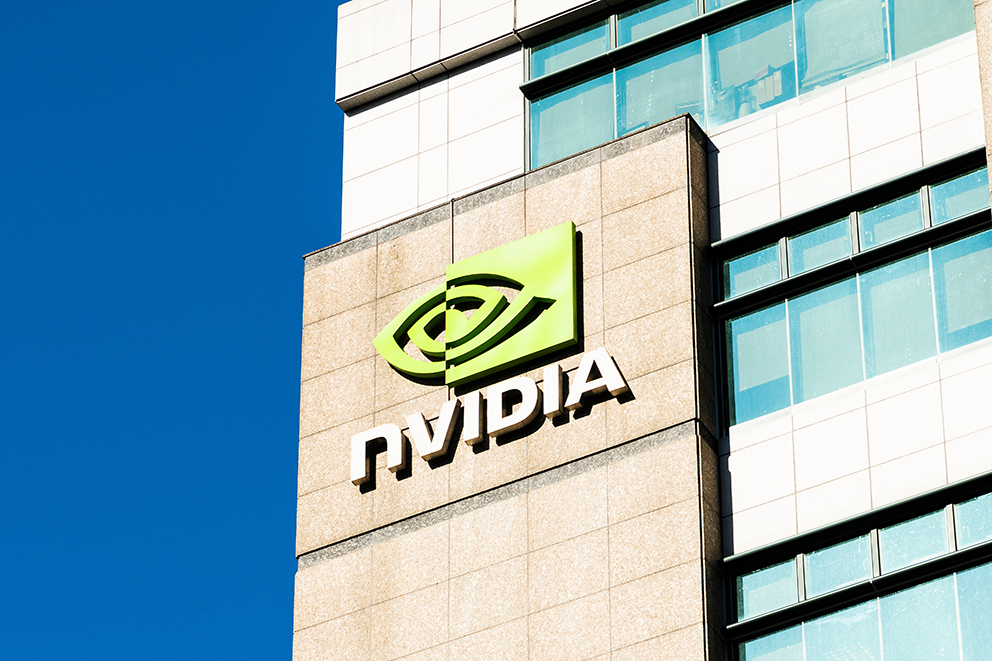

Most people think Nvidia got lucky with AI. They made chips that were good for gaming, and it turned out those same chips were good for machine learning.But that's not what happened at all…What actually happened reveals a fundamental misunderstanding of technology markets, and why investors often misread them.
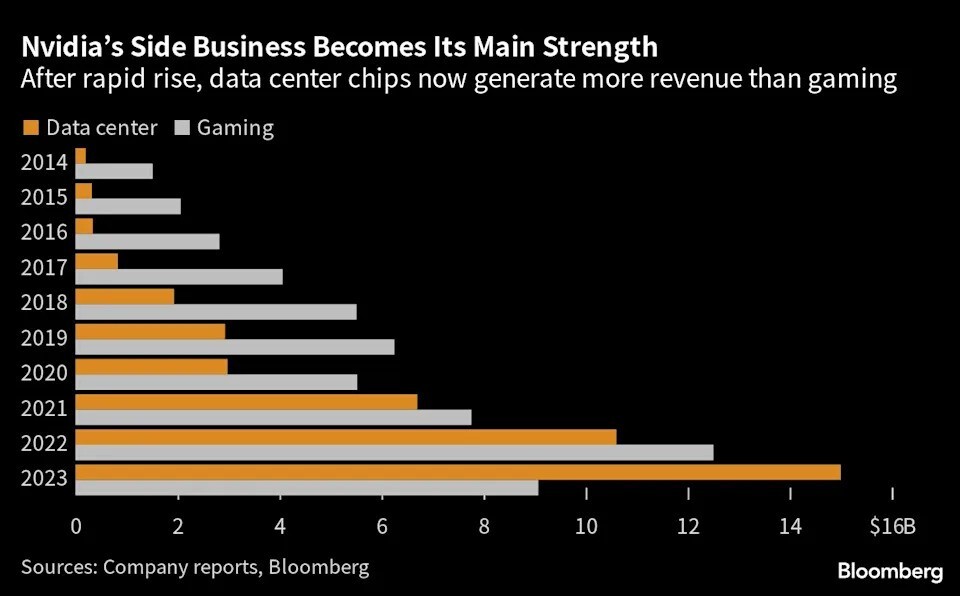
Nvidia’s data center revenue flipped gaming in 2023
Why Markets Misread Platform Plays
Markets consistently undervalue platform investments while they're being made, then overvalue them once they succeed. Platform plays often appear to be terrible business decisions for years before they become obviously valuable.CUDA — Nvidia's software platform that made it possible to harness graphics card compute power for general-purpose usage — is the perfect example of this.When Nvidia was spending heavily on CUDA in the mid-2000s, the market saw it as an expensive distraction from its core graphics business.The investment made no sense. They were giving away free software to sell hardware, in an industry where hardware margins were already under pressure.Markets tend to price such technology investments through the lens of existing applications rather than potential ones. They can see the current build cost but fail to factor in the potential future value.
The Economics of Platform Capture
Technology markets have the somewhat unique capacity to shift from competing products to competing ecosystems.If this shift from product to ecosystem wars occurs, traditional competitive analysis can become almost useless.In a product market, a 10% advantage might translate to a 10% market share gain. In an ecosystem market, a 10% advantage can translate to a 90% market share, due to network effects and switching costs.This is why established companies with superior resources often lose to platform challengers. AMD and Intel both had as much (or more) money and engineering talent as Nvidia during its CUDA development years. But they were competing in the wrong game. They were optimizing for product performance while Nvidia was building ecosystem lock-in.
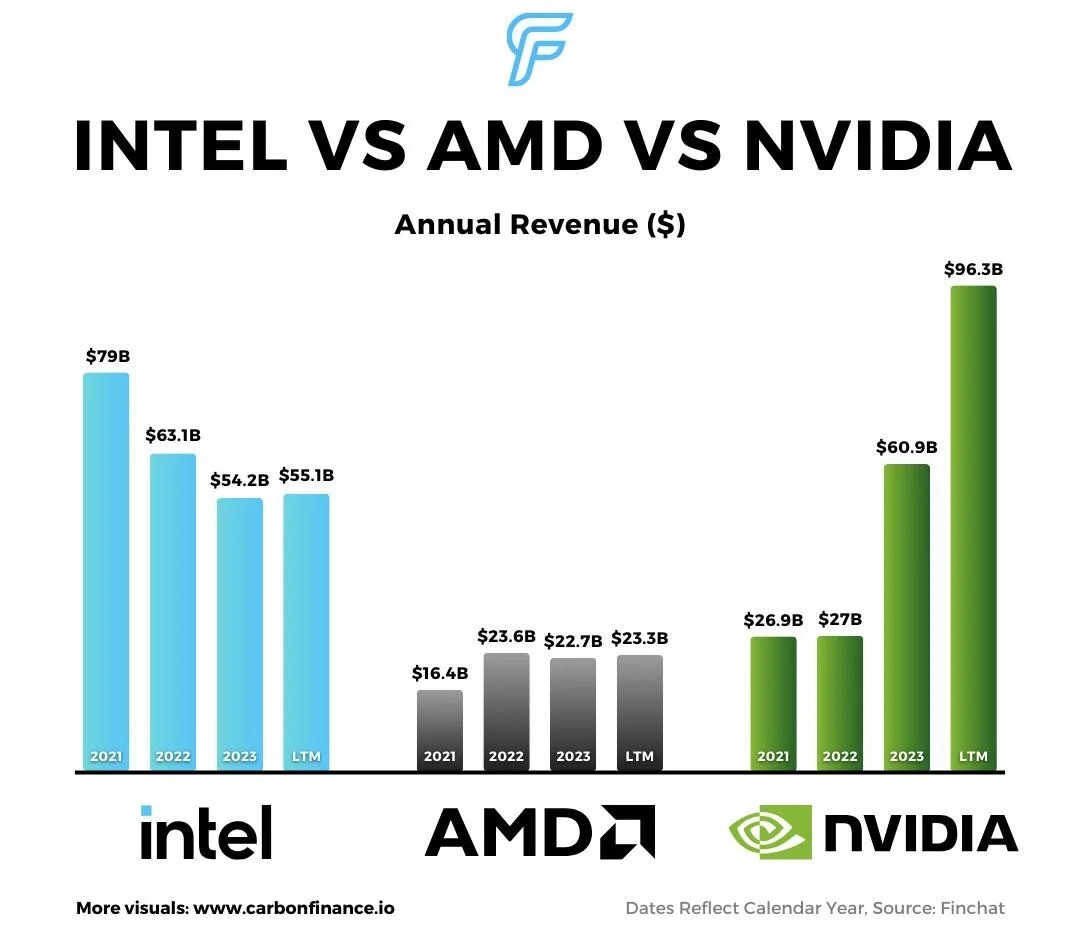
The Platform Investment Paradox
Platform investments create a paradox for public markets. The companies that make the biggest platform bets often see their stock prices suffer during the investment phase.Product investments have visible, measurable returns that markets can model. Platform investments have uncertain returns that depend on market timing and adoption patterns that are impossible to predict.This is why markets consistently undervalue platform companies during their growth phase. Traditional financial metrics capture the cost of platform investment but miss the value creation occurring in the ecosystem.By the time platform value becomes visible in financial results, the strategic opportunity has usually already passed. The companies that capture platform markets are typically those that invest before the value is measurable, not after it becomes obvious.
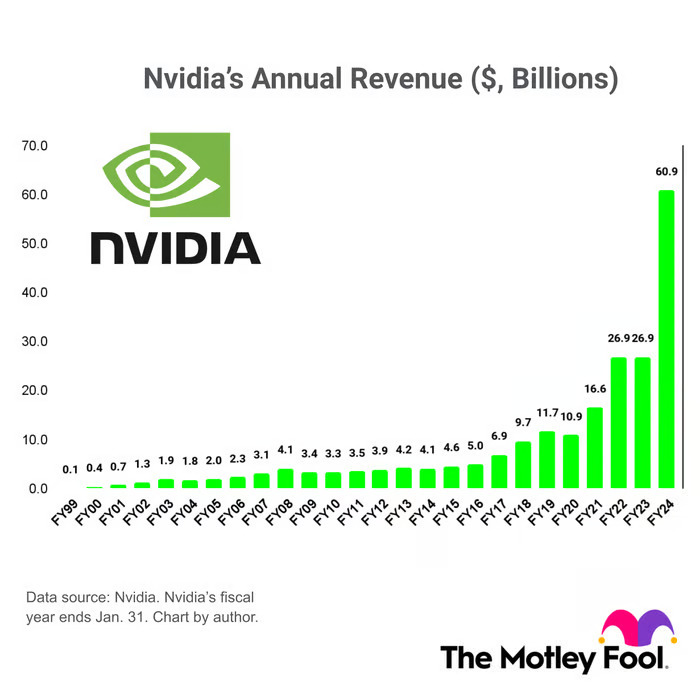
Nvidia’s 25-year Annual revenue growth - image by Motley Fool
Ecosystem Network Effect
Every developer who learns CUDA makes the Nvidia ecosystem more valuable. Every model trained on Nvidia infrastructure increases switching costs for the entire AI market.Gaining a competitive advantage in platform markets is more about ecosystem momentum than building superior products. The platform that attracts the most developers and creates the most applications becomes increasingly difficult to displace.Markets often misinterpret this momentum as a temporary competitive advantage rather than recognizing it as a structural shift in the market. They keep expecting "competition" to erode platform dominance, not realizing that successful platforms tend to make competition irrelevant.
What This Means for Market Analysis
The Nvidia pattern suggests that technology market analysis needs to focus more on ecosystem dynamics and less on product comparisons. The companies that will dominate the next wave of technology markets are likely building platforms today for applications that don't yet exist at scale.This requires looking beyond current revenue and margins to understand what infrastructure is being built for the future. The most important question isn't whether a company has the best current product, but whether they're creating the ecosystem that future applications will be built on.Of course, such companies are unlikely to achieve the heights of Nvidia, but the ones that find success will likely follow the same pattern — years of patient platform building followed by explosive ecosystem capture when the market inflection point arrives.Trade Nvidia and thousands of other Share CFDs on GO Markets — starting from just US$0.02 per share with no monthly data fee.


Few traders would suggest that effective risk management is highly critical to ongoing trading success. But there remains an ongoing debate about the optimal risk management method to use, and whether a system stop loss is something that is needed at all. There are a lot of traders who remain unconfident about what is best for their individual trading style. If you get it wrong, the likely scenarios are either you are stopped out too early by market noise only to see price subsequently move in your desired direction, or that placement means that you take a larger loss than planned. This is especially true in leveraged trading, where even small moves can have a significant impact. The potential for a catastrophic candle subsequent to a black swan event or even a sudden unplanned news item coming across the wires can do major damage to your account balance if you are not effectively protected.
Do You Need a Stop at All?
There are traders who argue against hard stops, preferring mental stops or flexible exits based on evolving price action. On the surface, this can sound appealing as it is price action that invariably dictates entry, so using the same logic for exit appears to be congruent.
What does this mean in reality?
The emotional pressure of not having a safety net can be significant and may shift during the life of a trade, particularly when a trade is not moving in your desired direction. The challenge of discipline in execution is difficult enough when a trade has moved into profit, but if you are in a losing position, this is amplifiedA catastrophic candle can occur at any time. Even if many events are predictable, some are not. A terrorist attack, a major environmental event, or a change in government policy can send prices spiralling in a heartbeat. Unless you are prepared to take on this risk, you need to be in front of a computer screen at all times. Even then, price movement may be exceedingly quick, causing major losses before you have a chance to take action.
Why Standard Stop Methods Often Fall Short
Fixed Pip or Percentage Stops
The idea of a fixed-size stop, whether it’s 50 pips or a 1% move from entry, appeals because it’s simple and clear-cut.However, markets don’t move in uniform increments. A 20-pip move on EURUSD might be normal activity in Asia on an hourly chart, but can be significantly different at the start of the European session.On the AUDNZD, a 1% move in price could take several hours to happen, but on a gold trade, it could happen in minutes.These stops lack sensitivity to volatility, timeframe, and market context. They may work on a single instrument in a single timeframe, but are likely not transferable to any other context.
The Problem with Round Numbers
The human mind is automatically drawn to round numbers.Traders often cluster buy and sell pending orders and stop orders around these levels, creating self-fulfilling reaction points for the market.If you have identified that your desired stop is near a round number, consider the “spacing” option, perhaps a buffer of 10-20$ ATR to take it away from the wicks we often see around these levels as stops are taken out. For example, if ATR is 30 pips and price is at a round number, consider setting your stop to 3-6 pips beyond the round number, giving your trade a fighting chance to survive the typical round number fake-out.
Key Level Stops
Similar to round numbers, key levels based on previous price action are logical places for prices to test and bounce, and trigger your stop.The same buffer principle described above could also be applied in this scenario. Looking at what a typical test and failure of levels in price distance on specific instruments may have some value, but this is the next level after a system is already in place, and does not account for volatility changes during a day.
The Case for the ATR Multiple Stop
The Average True Range (ATR) measures market volatility by averaging recent price ranges.When you multiply ATR by a specific factor, you create a volatility-adjusted stop that scales with the current instrument and timeframe you are trading.There are three main reasons that a multiple of ATR-based stops may overcome some of the challenges outlined earlier:
- They are flexible with and responsive to the underlying instrument character
- They provide consistency and the required automatic adjustment across instruments and on different timeframes
- They go some way to help avoid stops that are too tight in volatile markets or too loose in quiet ones
For example, on your chosen instrument, the ATR on a 15-minute chart may be 12 pips. If you were to have in your plan that stops will be placed 1.5x ATR away from the signal for entry, then you would place the stop 18 pips away.However, if you were trading a longer timeframe where the expectation is a great movement per candle, the ATR may be 20 pips; hence, your stop would be placed 30 pips away. You can then calculate the position size based on the difference between entry and stop compared with your risk tolerance. This is important not to miss; the key here is to keep risk within a tolerable limit while also making sure you are giving your trade a chance to breathe.
The ATR challenges
Let’s say that you have made the decision to explore an ATR stop further; there are additional decisions to make as to how you use this in your trading.
Challenge #1 - How Big Should Your ATR Multiple Be?
The “right” multiple depends on:
- Your trading style
- The market you trade
- Your timeframe
Here is a practical approach to get you started.
- Review your last 20 trades
- Check where your “undesirable” stops were hit. Record whether they were inside your chosen ATR multiple times. (Remember you are looking for probabilities here, not an “every time” solution.)
- Adjust and test until you find a range that minimises premature stop-outs without giving away too much profit potential.
1.5 ATR may be a good starting point to try, as this is a commonly used level by some traders.
Challenge #2 - Static ATR vs. Dynamic ATR Stops
Static ATR Stops are calculated at entry and remain fixed throughout the life of the trade, are simple, and require no adjustment.Dynamic ATR Stops are adjusted with changing volatility, which may be most relevant for trades held over multiple sessions, but does require regular monitoring.Ultimately, you need to make a choice that is right for you, and this may be a hybrid approach where there are defined times to adjust. Of course, this may be negated to a large degree, dependent on what point your initial stop begins to trail with the direction of the trade.
Challenge #3 Entry Signal Level vs. Entry Price — Where Should You Anchor Your Stop?
This is a nuance many may overlook. You need to plant your flag on how you are going to calculate your ATR-based stop. From your actual entry price, or from the signal level?Logically, the trade idea is proven to have moved against you when the reason for entry is no longer valid. However, there may be some price distance between these two levels, so one approach I have seen used is if the entry candle is more than X ATR above the signal line, then use this as your point.Again, if you need to find out what is right for you and your trading style, start with the simple first and then add the variation to see if there is a difference in outcomes.
This is Only Step One
Placing your stop is only the beginning of trade management. The next phase is knowing how and when to trail your stop so you can lock in profit as a trade moves in your direction.This is a story for another day, but worth mentioning as part of your “grand exit plan”. We have done both videos and articles on this, so it would be worth it once you have mastered this element to move on to the next.
Summary
The ATR multiple stop is one of the most adaptable and logical ways to set your initial risk level.It offers a structured way to try and avoid some of the classic stop placement pitfalls by accommodating market conditions, instrument volatility, and adaptability to the timeframe.But like any method, it has challenges that you need to be aware of in your decision-making:
- Choosing the right ATR multiple
- Deciding between static and dynamic approaches
- Aligning your stop with your entry price
All require planning, testing, and execution discipline. Your starting point is to test this out, ideally on trades you have taken previously, and incrementally build on a relatively simple approach.


Most traders follow a familiar routine when planning trades:They scan for a setup — a candlestick pattern, a moving average crossover, or a favourite indicator alignment. When they find one, they take the trade, set a stop somewhere "logical," and target a multiple of their risk.And, there is nothing wrong with this! It is systematic and structured, and if it is based on a specific set of unambiguous criteria within your trading plan, it can work to your advantage. But, perhaps there is another way to achieve improved trading outcomes?The potential flaw in the “every trader does it” approach is subtle but can be critical. It assumes that the setup itself automatically means the market will move as far as you expect, and be clean enough for the trade not to be impacted by market noise.However, without a logical, higher probability exit point, your supposed great entry could quickly turn into the wrong trade.This is where reverse engineering your trade (starting with the exit) comes in.
What Is Reverse Engineering in Trading?
Instead of beginning with the entry, you start with a different question: "Where is price most likely to go — and is there a logical reason for it to get there?"You look for the destination or a ‘zone’ where the price has a high probability of pausing or even reversing. Current price action is often dictated by previous price action to some degree. This could be a support or resistance area, a previous swing high or low, or a volatility cluster that you may expect the market to seek out and price to hit.Once you have identified this likely exit point, you work backwards:
- Is there enough space between the current price and this target for the trade to offer a meaningful reward compared to the risk you are taking?
- Where would a logical stop be to make this trade viable from the perspective of my own risk/reward profile?
- Do current conditions make this trade worth entering now, or would it be prudent to wait?
Instead of forcing entries every time a setup appears, you filter opportunities through a forward-looking lens of probability based on what could happen based on price action.
Why the Exit-First Approach May Give You an Edge
When your focus is primarily on entry patterns, your risk-reward may suffer without you realising it. You may end up chasing trades where price has little room to move, ignoring close potential pause points in order to justify the trade, so squeezing risk-to-reward into the desire to simply get in, or worse, jumping in right before price reverses on you.The exit-first mindset, although perhaps seeming a little pedantic, may encourage you to engage more frequently in trades where:
- The market context supports a move in your favour.
- The price destination, and so reward, offers both logical and likely potential.
- The risk-to-reward is completely justified, without letting some of the “force a trade” demons take hold, resulting in you pressing the entry button without checking this.
This alternative approach in how you view trade decisions does not mitigate the necessity to place meaningful stops or trail positions, but it could have the ability to force you to trade with the bigger picture in mind, not just the immediate momentary signal.
How to Reverse Engineer a Trade
Step 1 — Define a High-Probability Exit Zone
Study the chart and identify where and why the market has a reason to go to a particular price point.This is not about predicting the future per se, but about recognising where price may be naturally drawn based on observable market structure and previous price behaviour.These zones often include areas like:
- A price level that has respected a support or resistance level on multiple occasions.
- A prior (and usually relatively recent) swing high or low that acted as a turning point.
- Major round numbers that commonly attract stop positioning.
These zones often act like magnets; they can be points where market participants have historically placed orders (and may have more pending orders) or reacted strongly in the past.With the focus on these likely destinations first, you force yourself to consider the broader market context before setups. Even if we like to think we will take this into account in any entry decision, to make it your thinking start point, rather than the excitement of a new set-up, is a logical way to keep those emotions channelled correctly.
Step 2 — Assess the Trade Space Between Price and Target
With your potential price destination mapped out with clear reasoning, the next step is to examine the space between the current price and your identified target zone.Make the decision as to whether the market offers a meaningful opportunity, or if it is already too late to enter to justify the risk.This is where you assess your reward potential relative to your probable stop-loss size.For example, if the price is only a few pips or points away from your exit target, it may not be worth entering, even if the setup appears to meet your planned entry criteria. Conversely, if price is a defined distance away from your end point, with enough space to move and few hurdles to negotiate (e.g., previous pause points), that could be the opportunity you are looking for.
Step 3 — Identify a Low-Risk Entry Within That Trade Space
Now you look for your familiar entry triggers — within a clearly defined context where you already know:
- The price you are targeting.
- How much room price could move before it hits your identified zone
- Where a stop could be placed logically whilst still retaining a desirable risk/reward ratio.
You may choose to wait for a pullback to a previous key level and confirmation of a bounce, evidence of increasing momentum, or look for confirmation of a continued directional move in price action patterns.So, you are entering with a plan built around where price is going and not just reacting to where price may be right now.Once you have practiced this a few times, this is an approach you can pre-plan, perhaps even prior to market open. Identifying your top 3 could provide clear guidance for the session ahead.
What This Approach Changes About Your Trading Psychology
Trading with the end in mind can help shift your focus from one of reacting to one of improved planning. The aim is to more naturally:
- Take fewer, higher-quality trades.
- Avoiding emotional decisions based on the ‘heat-of-the-moment’ setups and considering context more fully
- Managing your trades with more clarity as you understand the complete structure you are trading
Summary
We are not suggesting for one moment that you should abandon what you are doing now, particularly if it is yielding great results. This is an alternative that may be worth adding to your trading toolbox to potentially harness the power of trading with the end in mind. Reverse engineering your trades is a different way of looking at things, and probably a very new way of thinking about the market that differs from what is traditionally taught.It will by default force you to look at and respect structure, context, and reward potential before you ever consider pulling the trigger.By starting with the exit in mind, you naturally filter out lower-quality trades, focus on logical market movement, and step away from the emotional pull of “setup chasing.”It is also worth re-emphasising that there is no difference in the need for a carefully crafted and tested trading plan between this and any other strategy.


Bitcoin hit a new all-time high (ATH) on July 14, rising to $122k for the first time in its history. On this same day in 2010, a single Bitcoin was worth… $0.07.This incredible rise from a near-worthless digital experiment to a $2.5 trillion asset class begs the question: What is it exactly that makes Bitcoin so valuable?[caption id="attachment_712157" align="alignnone" width="1835"]
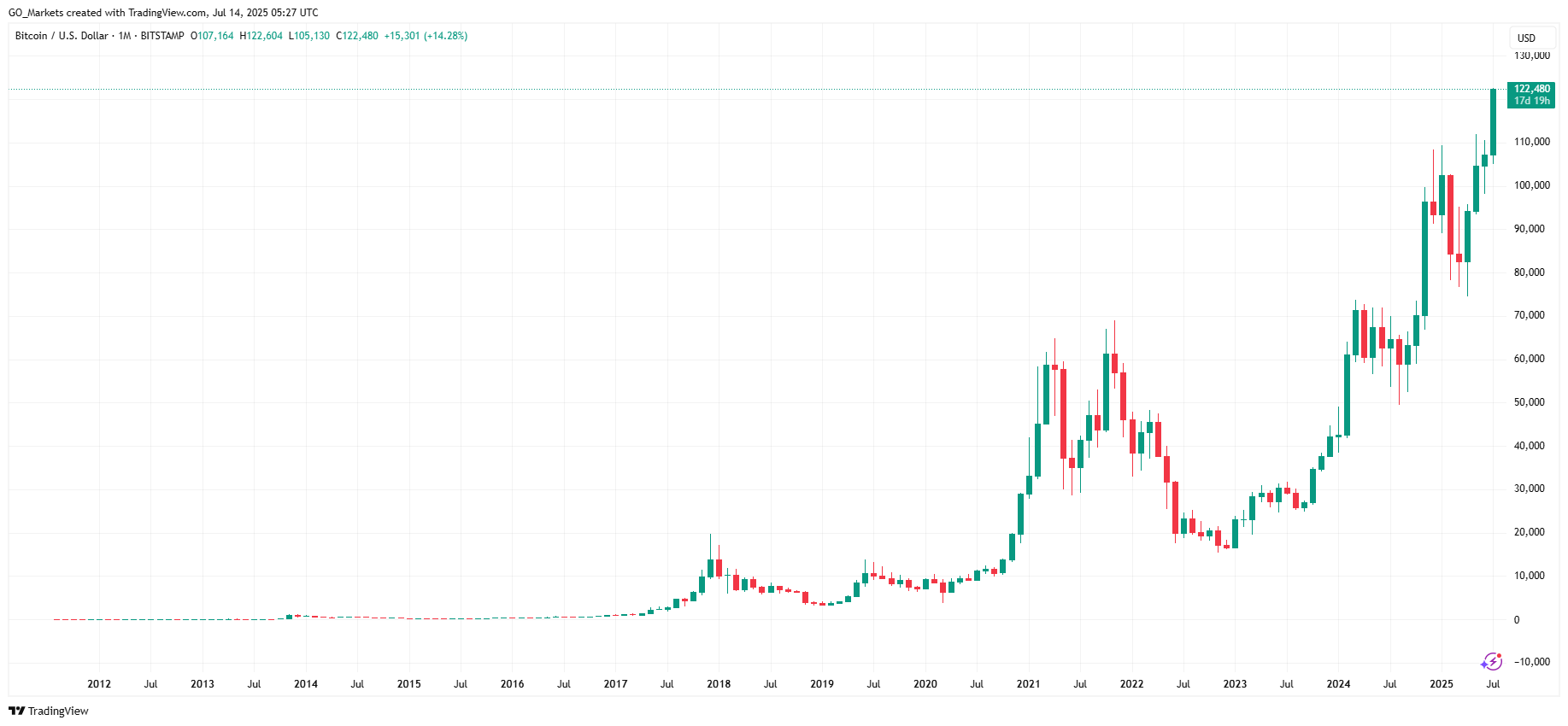
Bitcoin price 2012-2022[/caption]
What Gives Any Currency Its Value?
Since the dawn of organized trade, humans have searched for what economists call "sound money" — a currency that facilitates transactions while still maintaining value over time.
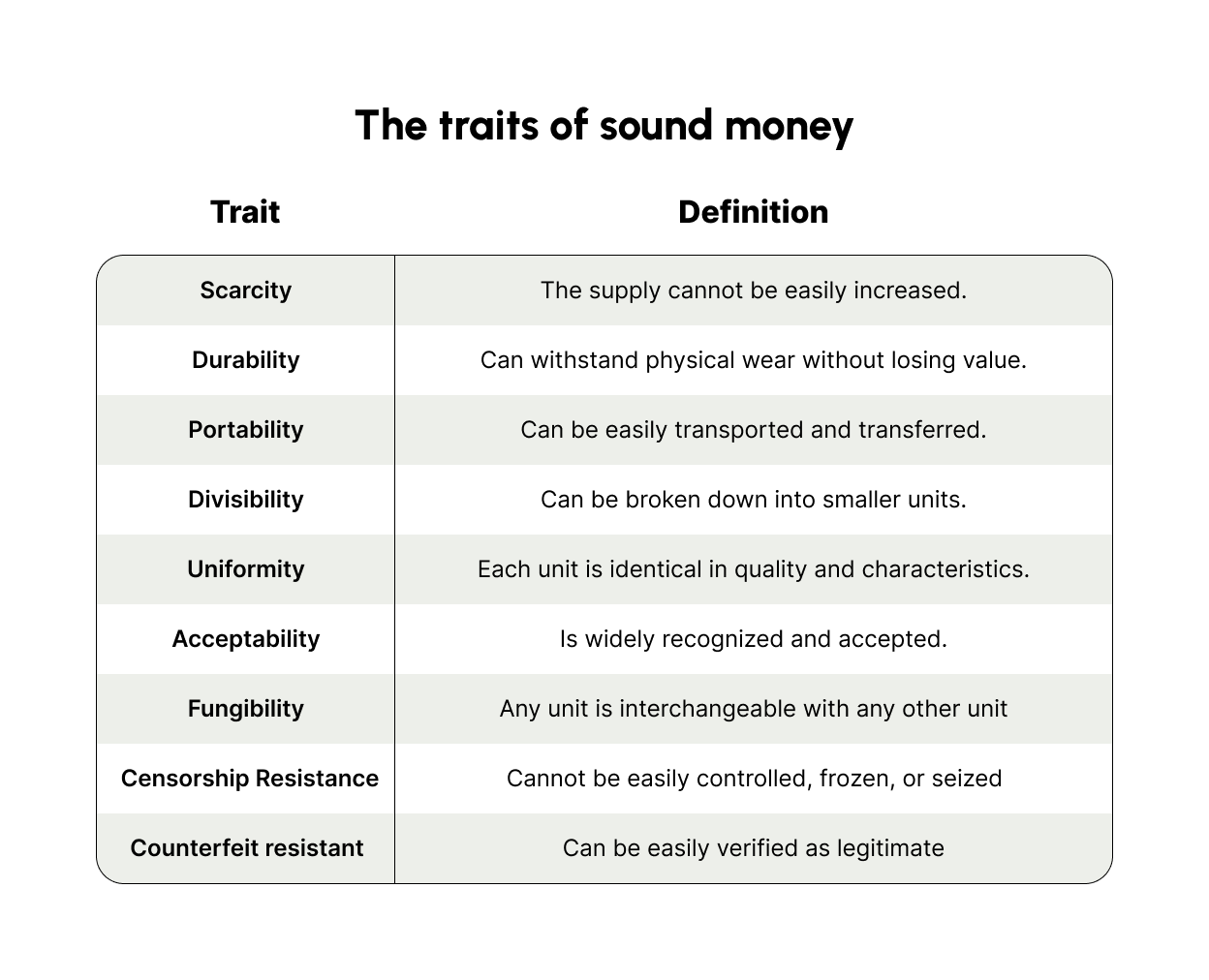
After centuries of trial and error, gold eventually emerged as the universally accepted currency. Its scarcity, durability, and divisibility made it great for storing and transferring value. But physical gold wasn’t able to satisfy all the traits of sound money — it was heavy, difficult to transport, and vulnerable to theft during long-distance trade.To address these limitations, a new solution was found — countries began issuing paper currency guaranteed by the government, backed by gold reserves.This paper currency is (more or less) the currency we know today. And for the past few hundred years, it was the currency that satisfied the most requirements for sound money.However, as we entered the digital age, the idea that a “digital currency” could be created to satisfy all sound money criteria began to gain traction.This is where Bitcoin comes in.
The Bitcoin Breakthrough
Multiple attempts to create a digital version of sound money were made throughout the 1990s and 2000s. But they all ran into the same problem: double spending.The inherent issue with anything digital is that it can be easily copied. There needed to be a way to prevent people from simply copying a digital currency file and “double-spending” it in multiple places.This created a situation where the last two traits of sound money — Censorship Resistance and Counterfeit Resistance — could not be satisfied simultaneously.To satisfy Counterfeit Resistance, double spending had to be prevented. To prevent double spending, a central authority was needed to verify transactions, which opened up the currency to censorship.It wasn’t until 2008, when a paper named “Bitcoin: A Peer-to-Peer Electronic Cash System“ was innocuously sent to a cryptography mailing list, that a solution was discovered.Instead of relying on a central authority, Bitcoin proposed a distributed network where every participant keeps a copy of every transaction that has ever occurred.This shared ledger (now better known as “the blockchain”) is maintained by a network of thousands of computers (nodes) around the world. When someone wants to send Bitcoin, they need to broadcast their transaction to the network. The computers then work together to verify that the sender actually owns the Bitcoin and hasn't already spent it elsewhere.If everyone has a complete record of all transactions, double spending becomes impossible. You can't spend the same Bitcoin twice because the entire network can see your complete transaction history.This breakthrough meant, for the first time, a form of currency existed that could (theoretically) satisfy all the traits of sound money.
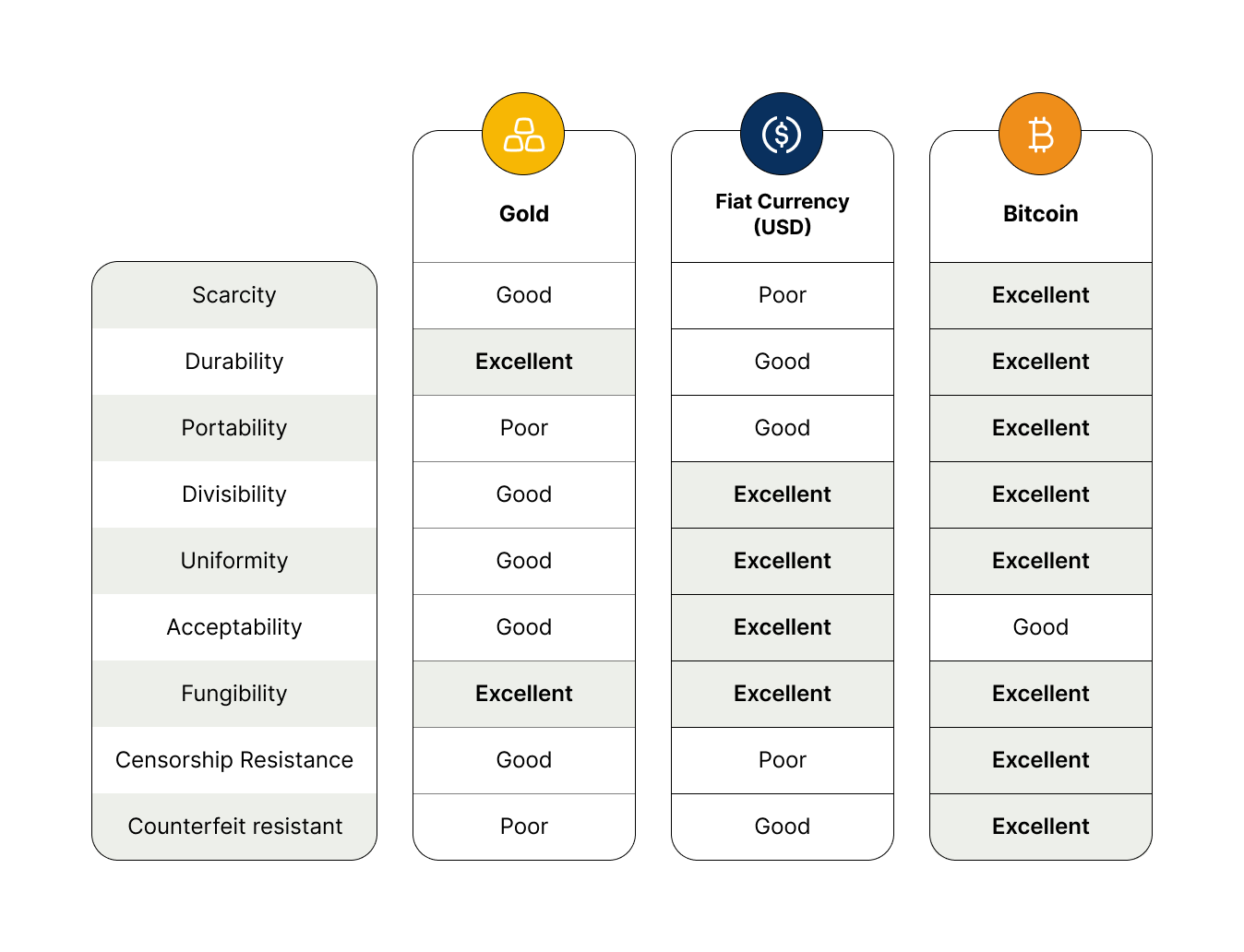
However, the fact that Bitcoin satisfies these traits does not automatically make it valuable.Bitcoin’s “sound money” breakthrough was just a novelty; it still needs practicality with a clear fundamental value add to justify having any worth.
What Gives Bitcoin Its Fundamental Value?
It created a new technology. The blockchain solution was far more reaching than just preventing double-spending. Blockchain introduced a way to create permanent, tamper-proof records without requiring a central authority to maintain them.This unlocked possibilities across virtually every industry. Everything that previously required a trusted middleman to verify, record, or enforce agreements could now be rebuilt on this trustless infrastructure.It has absolute scarcity. Bitcoin's supply is permanently capped at 21 million coins, written into its code and enforced by the network. This creates predictable, verifiable scarcity. Unlike gold, where new deposits can be discovered, Bitcoin's scarcity is mathematically guaranteed.It is censorship-resistant. Bitcoin transactions cannot be blocked, reversed, or frozen by governments or financial institutions. This makes it valuable for those living in countries where traditional money systems might be unreliable or compromised.It is globally accessible. Anyone with internet access can send or receive Bitcoin anywhere in the world, 24/7. This makes it particularly valuable in regions with limited banking infrastructure or restrictive governments.Bitcoin is decentralized and secure. Because the Bitcoin network operates through thousands of nodes worldwide, it means no single entity can control, manipulate, or shut down the network.It is transparent and auditable. Every Bitcoin transaction is recorded on its public ledger that anyone can verify. This ledger has been running with 100% uptime for over 12 years, with its only two minor downtime events occurring early in its formative years.
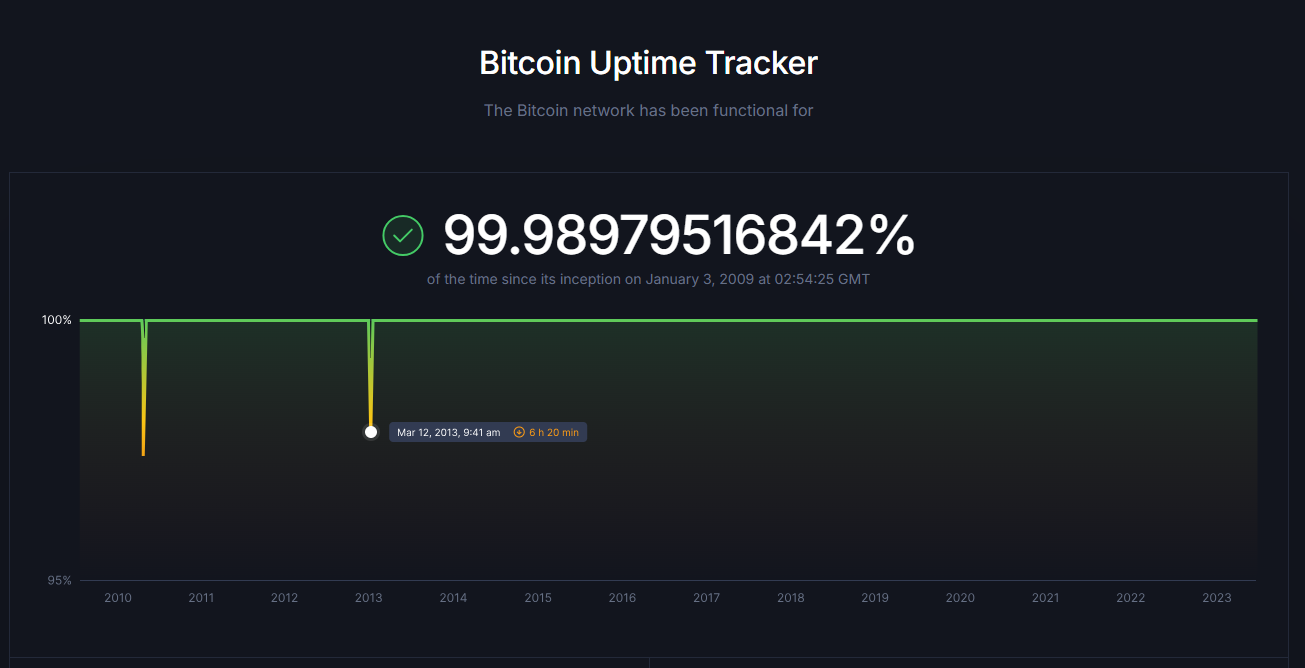
How Much of Bitcoin’s Value is Speculative?
So, Bitcoin has a good fundamental value proposition, but does it justify its nearly $2.5 trillion market valuation?The short answer is no. Just like gold, if you valued it only on its practical usability, its market cap would be significantly lower.Other cryptocurrencies like Ethereum, Solana, and Tron all have a far superior tech stack, yet Bitcoin has a valuation over five times these assets combined.
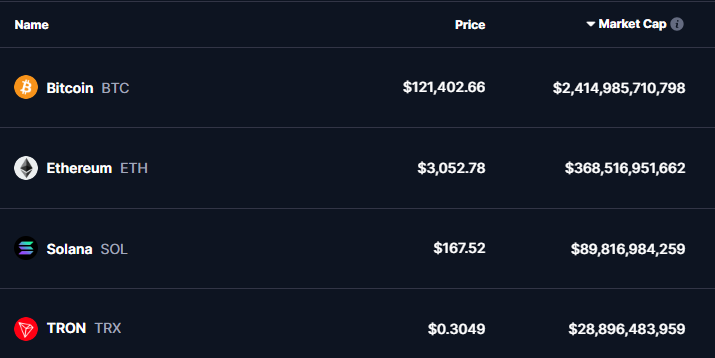
However, like gold, if you start to derive Bitcoin's value from beyond its core functionality, its huge market cap begins to make more sense.Bitcoin has achieved institutional adoption well beyond any of its counterparts. Major corporations, hedge funds, and even nation-states have added Bitcoin to their balance sheets. The most notable of which is MicroStrategy, with current holdings of 597,325 BTC.US Spot Bitcoin ETFs went live in January 2024, the first-ever crypto spot ETF in the US. They have seen over USD$50 billion in combined inflows since launch and generated the biggest first-year inflows on record (beating out Gold ETFs' long-standing record).And Donald Trump has signed an executive order to create a US Strategic Bitcoin Reserve — turning Bitcoin into a national stockpile asset alongside Gold and Oil to help prop up the US Dollar.More nuanced value can also be derived from things like Bitcoin’s 15-yeartrack record of resilience, its community network effects, and the anonymity of its creator — Satoshi Nakamoto.[caption id="attachment_712156" align="alignnone" width="968"]

Sculpture of Satoshi in Switzerland that vanishes from certain angles[/caption]All these factors, combined with its fundamentals, make a strong case for a high Bitcoin valuation. Whether that valuation is as enormous as $2.5 trillion is up for debate. Still, we can be confident that Bitcoin is not a purely speculative asset, like many critics have touted in the past.
Summary
Bitcoin has legitimate technical and economic properties that create genuine value. It is the first form of truly sound money, and it has introduced fundamental innovation that is revolutionary in many ways.However, like many new technologies, the market is still feeling out what it's actually worth. The $2.5 trillion valuation could be justified, or it could be a bubble, or both at different times.What is clear is that Bitcoin isn't going away. Whether it becomes a major part of the global financial system or remains a niche asset, it has established itself as a permanent fixture in financial markets that can't be ignored.Start trading Bitcoin and 38 other Cryptocurrency CFDs on GO Markets today.

